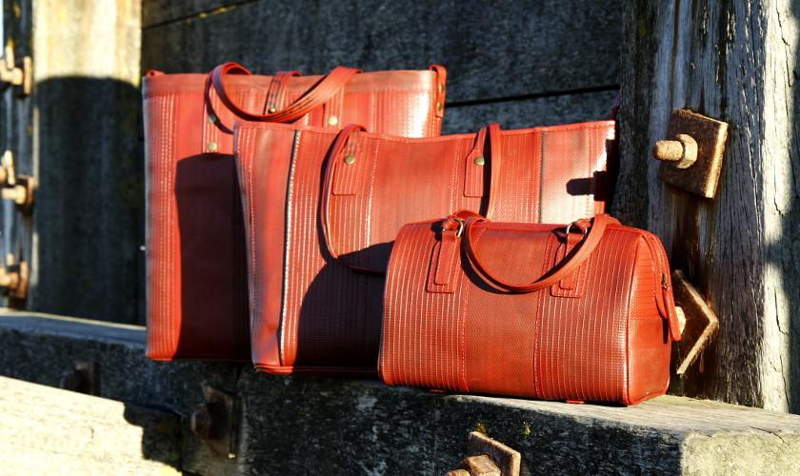The Circular Economy has seen rapid technical advancements enabling remanufactured products to look and perform as new, while bringing a range of other desirable benefits.
Here are 5 reasons why remanufactured/circular economy products are better than those made from virgin resources.
1. Cost Savings
Raw material costs, processing costs (refining, shaping, coating, finishing) and the margins at every step in a virgin resource product’s supply chain, are expensive.
For remanufacturing, where a product is disassembled at the component level (rather than into separate materials) and broken/out-dated parts are replaced and then the item reassembled, the cost saving is around HALF of the list price of the same product from virgin resources.
This is illustrated in the exposé Office Furniture Costs, which compares the costs of virgin and remanufactured office furniture.
A second example is office photocopiers, which now see service with seven different clients, on average. Remanufacturing has enabled leading photocopier companies to reduce their price to customers without compromising their margins or the reliability of their machines.
2. Lower Structural Failure Rates
Design flaws and flaws in materials are difficult to identify during manufacturing and inspection, but lead to expensive and dangerous structural failures early in the first life of products from virgin resources. Having these failures from micro-cracks, inclusions, and design flaws occur in the first life of a product means a much reduced risk of occurrence in subsequent lives.
For example, Caterpillar remanufactures engines for heavy equipment. The UK Department of Defence deploys these engines in war zones, where the DoD benefits from the proven durability and quality of Caterpillar’s remanufactured engines in life-and-death situations.
3. Provenance
Previous lives give stories and character to products. Would you like to sit every day at a desk from James Bond’s MI6 office?
Public Health Wales’ Cardiff office desks from the Bond movie Spectre – some of the 94% of 2,500 items of furniture refurbished or remanufactured for the fitout

Italian leather sofas once sat on by billionaires at a leading London private equity firm now form a luxurious meeting space in the offices of NAOS, a cosmetics company.
Elvis and Kresse creates luxury accessories from used fire hoses, with the fire hoses proudly showing their heritage; this is part of the appeal of the items.
Elvis and Kresse products made from end-of-life fire hoses

Sadly, many interior designers looking for heritage choose reproduction furniture made from virgin resources of inferior quality to the original versions, often artificially distressed using toxic chemicals. In an office, this sends a number of undesirable messages to staff and visitors which challenge the authenticity of the company’s brand. At the same time, original pieces are being sent to landfill.
Here is how Artek (the store selling products designed by Finnish designer Alvar Aalto) describes its furniture: “As Artek products are made out of natural materials they age gracefully and gain patina over time. They tell the story of both the product and the users it has seen.”
4. Good local jobs
Remanufacturing circular economy products requires them to be disassembled, checked, repaired and then reassembled – utilising twice the labour of assembly alone. This generates additional local jobs than assembly from virgin parts.
These jobs require judgement and skill to diagnose and repair problems, which vary from item to item. This type of work is ideal for those new to the workforce (such as long term unemployed) because the variety exists within boundaries, allowing technicians to grow in confidence in the workforce while being presented with new challenges to solve on every item being remanufactured.
For example, eight long term unemployed with disabilities were employed on the Public Health Wales Cardiff office fitout to remanufacture office furniture and fit reclaimed flooring. Thanks in part to this experience, three of these are now in full time jobs.
5. Environmental sustainability
Because undamaged parts are checked, resurfaced and reused, remanufacturing reduces the environmental costs of circular economy products, on average, by 80%[1]. This means that they use 80% fewer virgin resources and, by extension, 80% lower biodiversity loss, energy & water consumption, greenhouse gas emissions, transport requirements and waste associated with extraction, refining, shaping, coating and finishing these materials.
Remanufacturing and the circular economy also captures a waste stream, reducing landfill.
Tracey Cooper, CEO of Public Health Wales, noted: “Once you have used circular economy products, there is no going back – why would you?” Public Health Wales has recently completed the fitout of another office, this time in Swansea, increasing the percentage of refurbished/remanufactured furniture to 95%.
ABOUT THE AUTHOR
Dr Greg Lavery is the Managing Director of Rype Office, which helps clients to create beautiful, productive offices at substantial cost savings through good design and by using remanufactured and sustainable office furniture. Email Greg@RypeOffice.com or phone 033 3358 3330.
[1] Giuntini, R., Gaudette, K. Remanufacturing: The next great opportunity for boosting US productivity, Business Horizons, Nov-Dec 2003, p. 44; McKenna, R. President and CEO, Motor & Equipment Manufacturers Association, Testimony before the International Trade Commission on: Remanufactured Goods: An Overview of the U.S. and Global Industries, Markets, and Trade, Investigation No. 332-525, Feb 2012.


